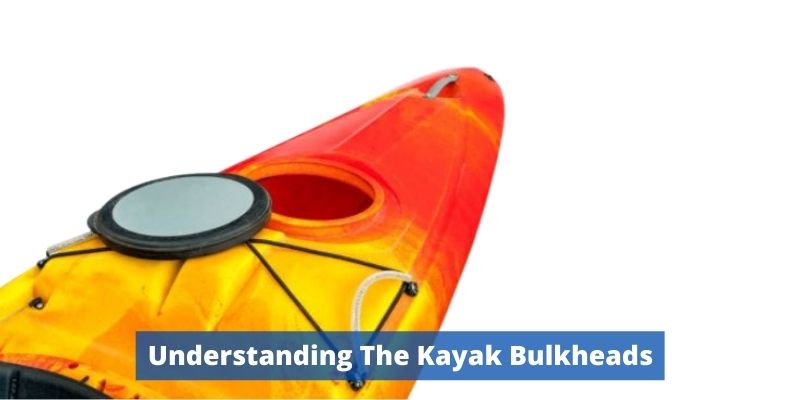The bulkhead is a small compartment within the hull of your kayak. It creates added buoyancy by trapping air, which will keep it afloat as you paddle on the water.
Kayaks mostly have hatches that open up to sealed storage space. If the hatch is closed, this area acts as a bulkhead that separates it from other parts of the kayak and keeps its contents safe (food or other important items) in case there’s an accident or water damage at sea.
If your vessel accidentally gets capsized and the hatches are open, you might end up with bulkheads filled with water. This makes it difficult for kayakers to empty out all this water from their vessels without them potentially going under as well.
On contrary, if the bulkheads are sealed, only the cockpit area will get flooded in case of a capsize. This should make it easier to flip and re-enter as you won’t need to empty the entire kayak of water like before.

What Are The Disadvantages Of Kayak Bulkhead
Some people argue that a bulkhead kayak is safer than an integrated one, but most others disagree. The reason for this debate is that while it reduces the chances of flooding and makes righting easy in case you flip over; however, bulkheads may make it impossible to turn back upright if there’s already water inside your boat.
This is due to the compartmentalized design of a bulkhead kayak. For example, in an integrated cockpit, the flooded water rests in one large section that can be drained or pumped out with a bilge pump from one location.
But, If all of the bulkhead compartments get filled with water, it could be a very tough job to access each compartment and drain the water out of them.
What Are The Foam Bulkheads
Sometimes vessels are made with foam bulkheads. These are blocks of tough minicell foam that form a vertical wall inside the craft, which then becomes its own floatation space. This is because no water can get in through this section to weigh it down or make it sink lower into the water.
A sit-on-top yak has a drain plug for drainage and no bulkheads. The main reason is the open design, unlike an enclosed cockpit on a sit-inside that can fill with water. A sit-on-top kayak is considered unsinkable (although it’s not 100% guaranteed) due to its sealed hull design since they are designed after one piece instead of three pieces like many other kayaks in the market today.
Foam can be installed on sit-inside yaks to act as a bulkhead, and it may work well for integrated kayaks that don’t have any compartments separate from the cockpit.
Can I Integrate My Own Bulkhead
If you find that your kayak lacks bulkheads, consider installing them yourself using minicell foam.
The first thing you’ll need to do is get some minicell foam. The perfect thickness for your bulkheads would be 3 inches, but any size will work as long as it’s closed-cell – meaning that there are no holes in the cells of the material that will improve the buoyancy of your vessel.
You need to make sure that your foam is larger than the area where you plan on applying it. Once shaped, use a marine silicone sealant around any side of the boat (bow or stern) to ensure there are watertight.
It’s smart to fit the foam near where your foot braces are at the bow, and with side space close to the backrest at the stern.
Wrapping Up (Kayak Bulkheads)
You get to choose whether you want an integrated kayak or a bulkhead one. The choice is yours, but the air compartments in bulkheads make them more stable and buoyant.
You should now be better informed for your next kayaking trip due to knowing more about bulkheads and adding them to your vessels. Bulkheads provide great floatation and can help you recover from a capsize with ease by helping correct the position of your sit-inside yak.

Hi, I’m Randy R. Lios and the owner of Floating Kayaks. I’ve always been adventuresome at heart. From the time, I got my first kayak at age 18 until now when I have multiple kayaks with accessories and spend 5-6 hours researching all the new related stuff in the market. I have always been fond of fishing since my childhood and kayaking is part of my weekend routine.